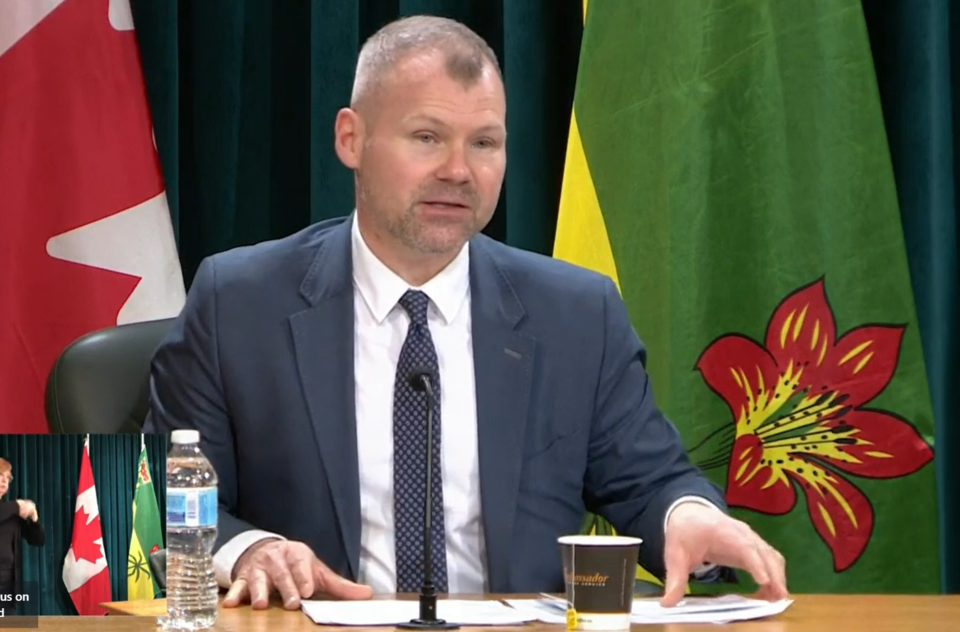WEYBURN – The provincial budget shows that Saskatchewan is getting “back on track” once again, said Weyburn-Big Muddy –°¿∂ ”∆µ and Education Minister Dustin Duncan.
The budget was brought down on Wednesday afternoon in the Legislature, with revenues expected to total $17.2 billion, and spending will total $17.6 billion, leaving a deficit of $463 million, according to government documents.
The projected revenues are up 18.5 per cent from the budget of a year ago, while spending is up 3.1 per cent.
A highlight for Weyburn from this budget is $6 million earmarked for Weyburn’s new hospital project, said Duncan, with the aim to finish off the project design and to get the project out to tender this year.
“The tender process will go over the summer,” he said. “The earliest we could see construction begin will be this winter, so it’s moving forward.”
The hospital is to be built on Fifth Avenue North, located east of King Street, and will replace the General Hospital.
Also for this area, there will be further work on Highways 6 and 39, with twinning in the Corinne area north of Milestone, and extending the twinning from Weyburn past the grain terminals.
“The plan is to do twinning rather than passing lanes. The passing lanes are well in place now,” said Duncan.
In terms of revenue sharing for the City of Weyburn, they will be receiving $1,994,406 this year, down from $2,172,785 last year.
This was due to the drop in spending due to COVID, as the revenue sharing is calculated on .75 of one percentage point of the provincial sales tax, and it’s based on the spending levels of two years when the province entered the pandemic lockdowns.
Overall, said the –°¿∂ ”∆µ, while there is a deficit this year, they are on track to have a balanced budget in a few years, with this year’s deficit down by $2.1 billion from last year, indicating the province’s economy is getting back on track after the challenges of the pandemic.
“I’m really pleased to see the increases in health care with the surgical initiative, to get us back to a three-month waiting list,” said Duncan, noting there is also more spending for mental health and addictions, and for rural health care.
“These are all areas that I hear about the most in the constituency,” he added.
The projections of revenues and expenses are based on key assumptions, according to Finance Minister Donna Harpauer, and these include an oil price of $75.75 US a barrel, a potash price of $407 US per KCI tonne, and an exchange rate of 80.04 cents on the U.S. dollar.
Noting the oil price has been above $110 a barrel recently (and at $106 as of Tuesday), Duncan said the price is quite volatile, as it’s gone up and down by $10 a barrel or more just in the last week or two, and it will depend on the price staying stable for a longer period of time.
In large part, the price volatility is due to the Russian invasion of Ukraine, said Duncan. “It’s hard to say six months from now what that’s going to look like,” he added, pointing out if the oil price stays high for an extended period of time, then they could end the fiscal year in a better position than they are now, and the deficit for the year could be lowered even more.
“We want to be cautious given it’s a very volatile situation,” said Duncan.
Some key highlights of the budget include the following:
• The Health budget of $6.8 billion, up by $288.1 million or 4.4 per cent from last year; of this amount, $21.6 million is to address the surgical wait list; $12.5 million in new funding for 11 new intensive care unit beds, bringing the number of new beds to 90 for 2022-23;
• The Education budget will be $3.8 billion, up 1.3 per cent, with the 27 school divisions to receive almost $2 billion in operating funds, an increase of $25 million (including covering the two-per-cent salary increase for teachers);
• Child care fees were reduced by up to 50 per cent as of February, and fees will be further reduced in September 2022;
• The Ministry of Advanced Education will see a budget of $740.3 million, including $4.9 million to expand nurse training by 150 seats, and $684.1 million in operating and capital grants for post-secondary institutions;
• The Social Services budget is $1.6 billion, up by 4.3 per cent from last year;
• The budget for policing and justice is $936.2 million, up by 10.8 per cent from a year ago, including $50.7 million to create a Provincial Protective Service branch to unite provincial peace officers into one structure, and $1.6 million for a warrant enforcement and suppression team, $6.4 million to establish the Saskatchewan Trafficking Response team, and $3.2 million to expand the Crime Reduction Team.




